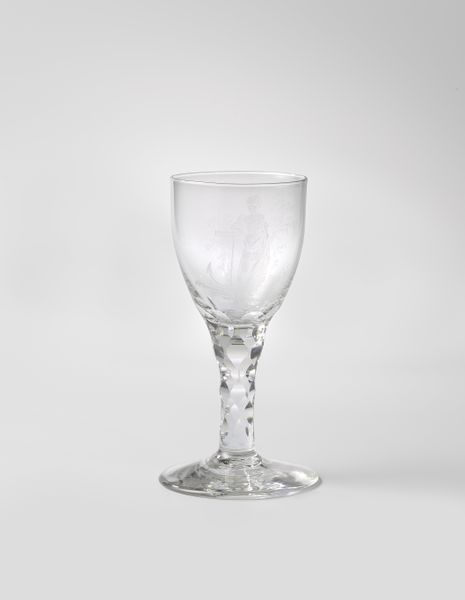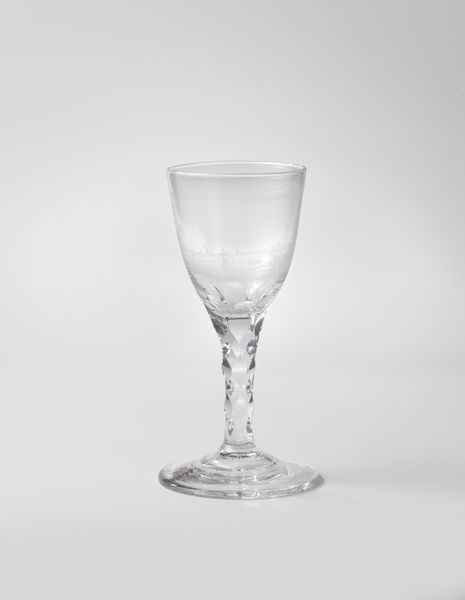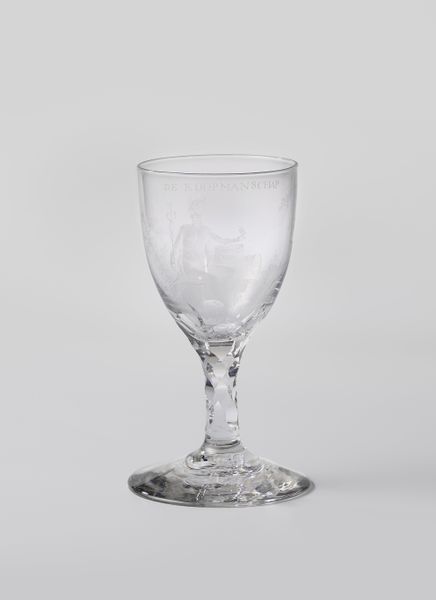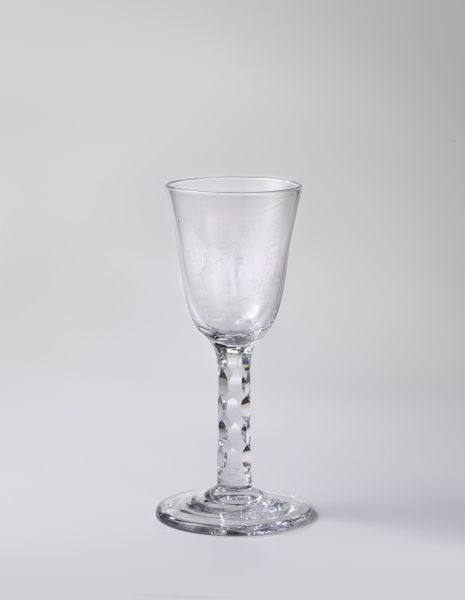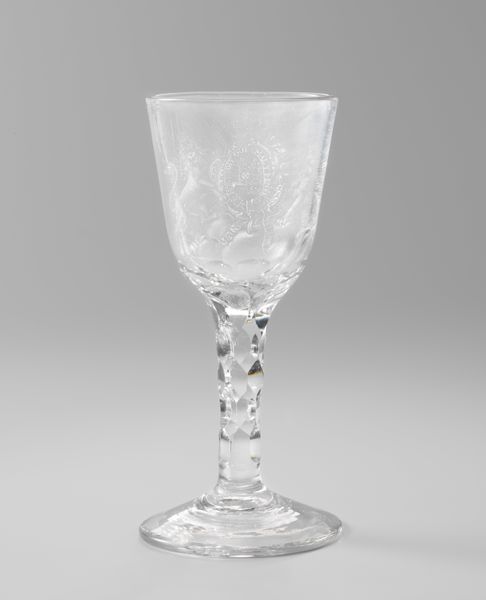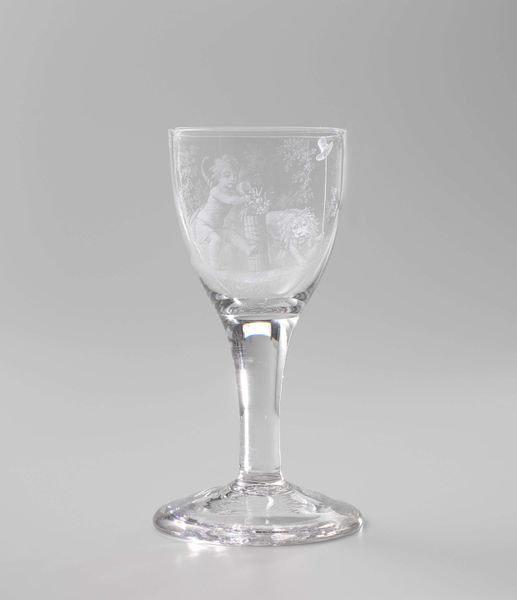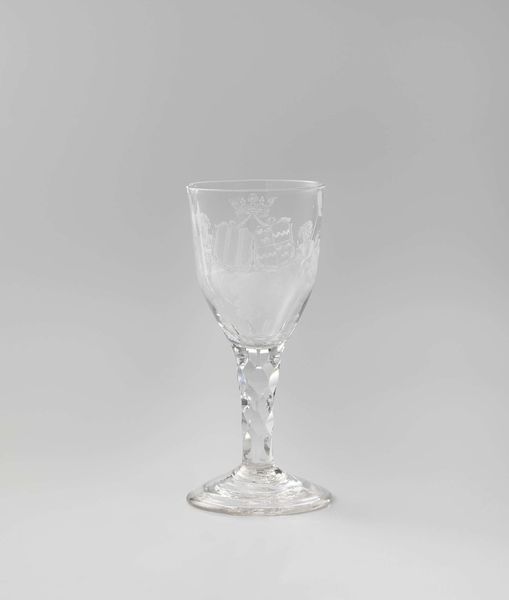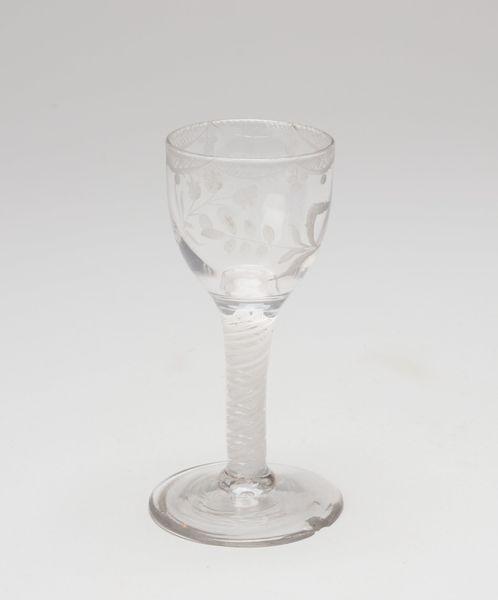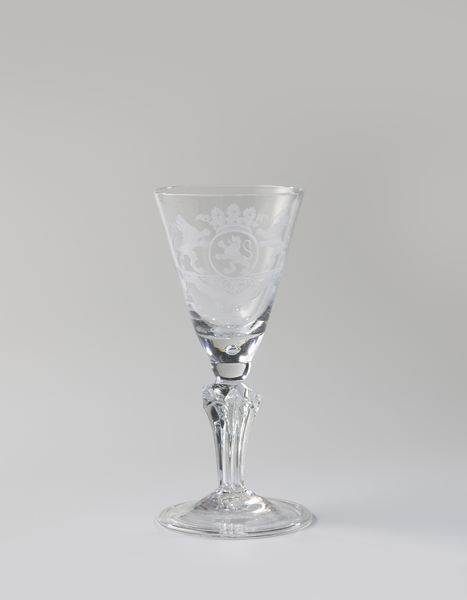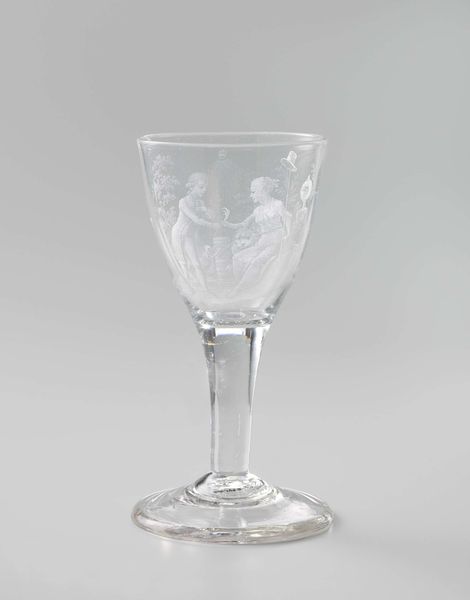
etching, glass
#
dutch-golden-age
#
etching
#
glass
#
history-painting
Dimensions: height 17.5 cm, diameter 8.8 cm, diameter 8.8 cm
Copyright: Rijks Museum: Open Domain
Curator: This delicate piece is a "Kelkglas met een voorstelling van de Naastenliefde," or Chalice Glass with a Representation of Charity, dating from before 1798. It's an etching on glass, created by an anonymous artist during the Dutch Golden Age. Editor: It's quite subtle. At first glance, it just looks like a simple, elegant glass, but there's a whole scene etched onto the surface of the goblet. Curator: Indeed. And considering the means of its creation, it provokes curiosity: who produced this piece, and how would it have been used and viewed by society during that era? These vessels played a key role in social rituals. Editor: Focusing on the visual language, the composition seems almost neoclassical. The figures are arranged in a very balanced, harmonious way. It reminds me of a classical frieze. How would you interpret this theme of charity formally, considering the era in which it was crafted? Curator: This glass likely reflects contemporary notions about the Dutch societal value of charity at the time. It makes one ponder who created this object, who enjoyed it, and under what societal circumstances. I think a crucial question becomes: who controlled the production and consumption of these objects, which promoted certain moral virtues? Editor: It seems deceptively simple but the etched scene adds layers of complexity. What looks like everyday craftsmanship actually portrays profound statements on social structures. This reminds me of how form and content become entangled in the viewing process. Curator: Absolutely. To me, these types of pieces always serve as reminders of social ideals being crafted and circulated alongside material objects. Editor: Seeing this Kelkglas, I appreciate that the study of the fine arts and that of material culture can be complementary paths of analysis, for a comprehensive grasp of visual culture as a whole.
Comments
No comments
Be the first to comment and join the conversation on the ultimate creative platform.
